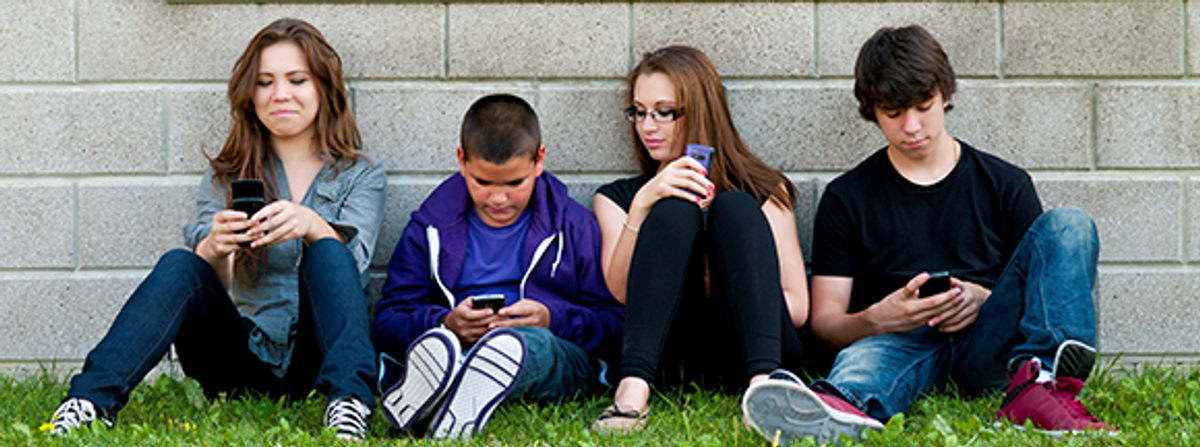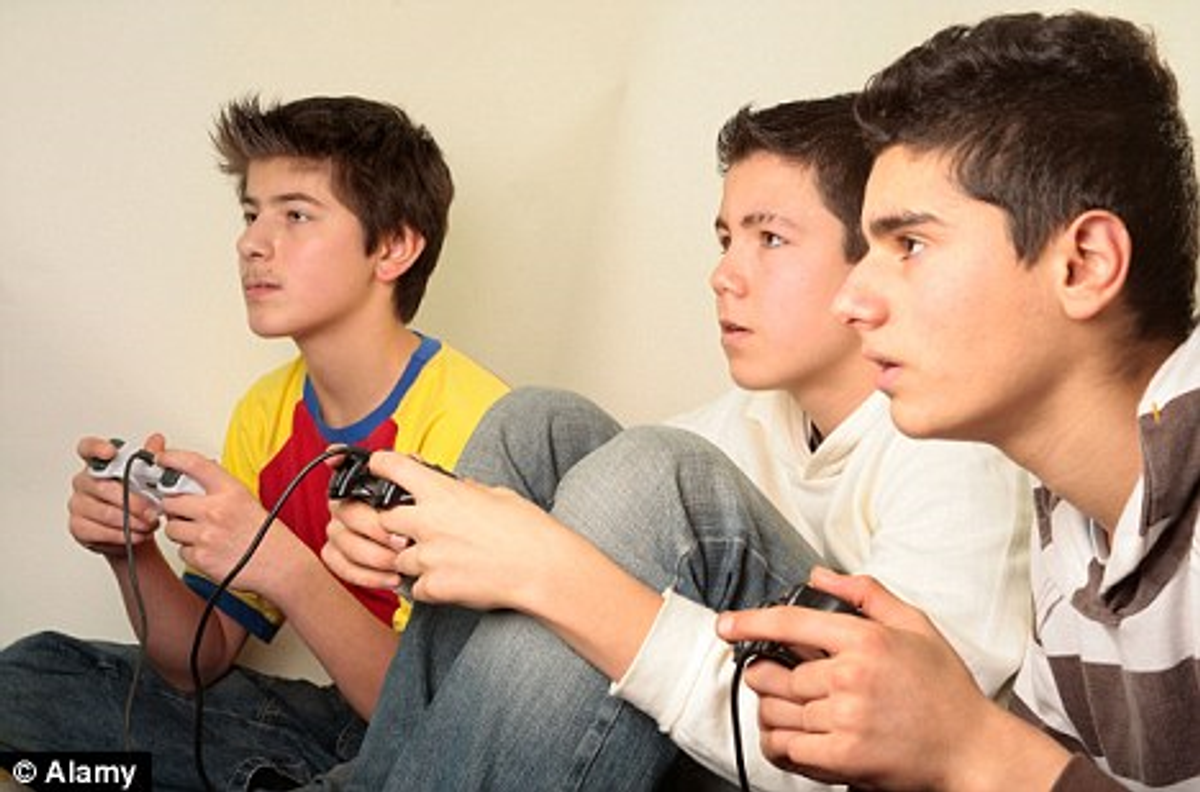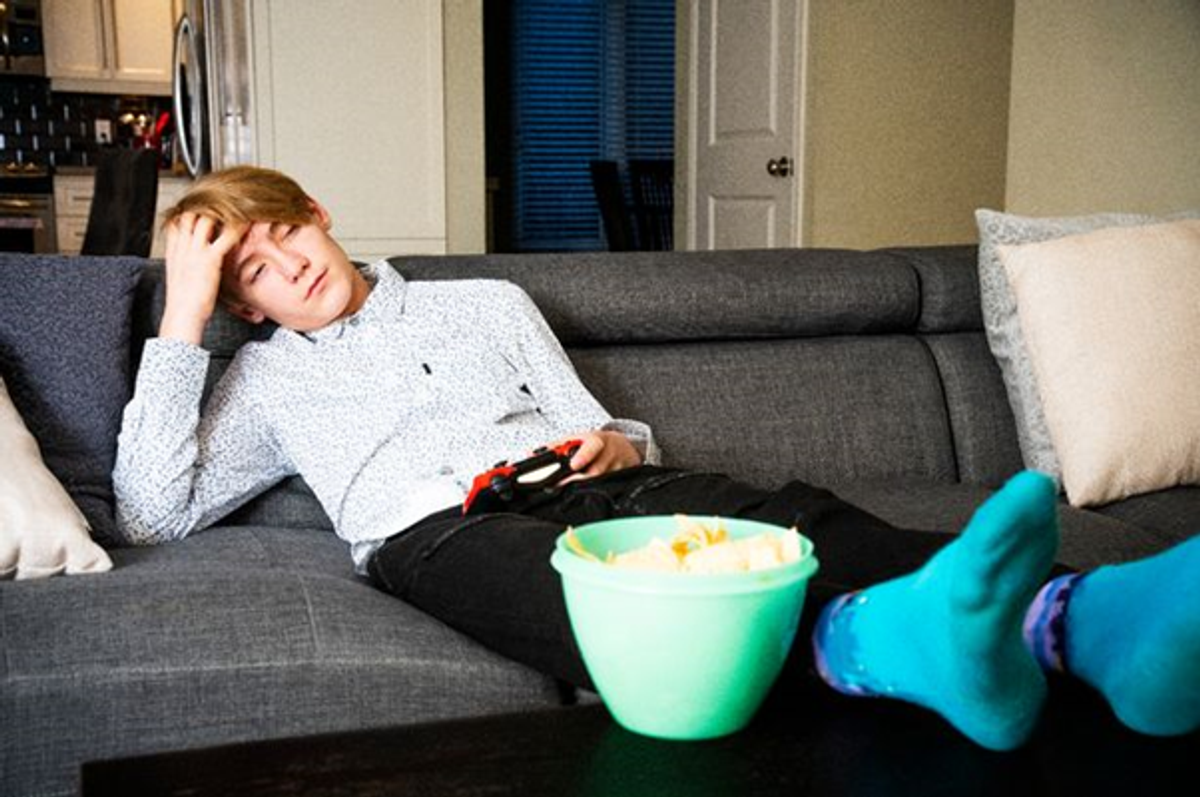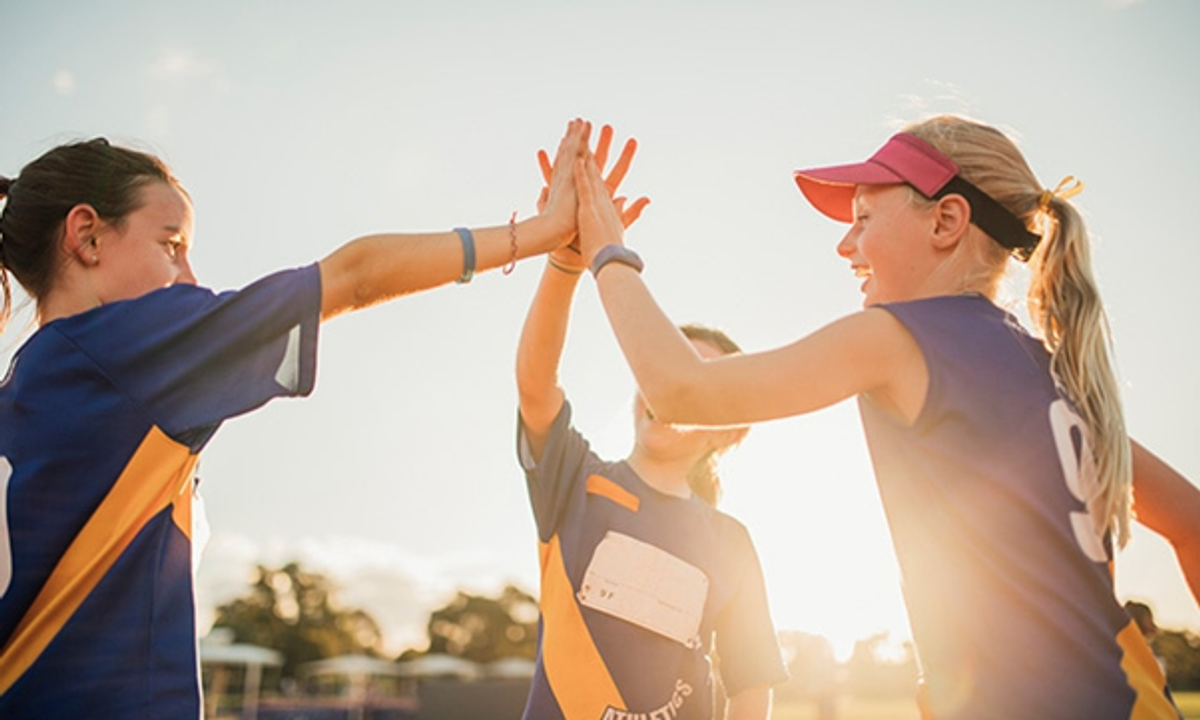Well-being Corner

Teen tracking study shows they spend most waking hours sitting down
Australian teenagers sit for more than two-thirds of the day, which may increase their risk of physical and social health problems, according to a first-of-its-kind study from Deakin University’s Institute for Physical Activity and Nutrition (IPAN).
The study, published today in the journal BMC Public Health, tracked nearly 400 students at 18 Victorian high schools using ‘activPALTM‘ wearable devices, which measure not only movement but also differentiate between time spent sitting, standing and lying during different periods of the day.
Lead author Dr Lauren Arundell, an Alfred Deakin Postdoctoral Research Fellow in IPAN, said the highest percentage of sitting time occurred during class, where students sat for 75 per cent of the time. This was followed by evenings, where 73 per cent of time was spent sitting.
Dr Arundell said she hoped the data from her study would help inform the times of day where interventions are needed to get teenagers sitting less and moving more.
“Our data suggests that the school timetable is an important contributor to adolescent sitting patterns,” she said.
“The introduction of standing or active class lessons, where students are encouraged to stand and move around while completing their work, can be an effective way of getting students to sit less and move more at school.
“But we also need to look at ways to make homework and recreation time less sedentary as teenagers spend almost three-quarters of the evening period between 6.00pm and 10.00pm sitting.”
Dr Arundell said this could be through modifying homework to incorporate more group or creative activities that require movement, and by encouraging teenagers to break up their sitting and move as often as possible.
“Teens are typically driven to school, sit at school, driven home, do their homework, and then watch TV or play video games and go to bed. That equates to far too much sitting time and is only exacerbated by the ubiquity of personal devices,” she said.
“While there’s no specific target for a healthy amount of sitting time, Australian guidelines recommend that youth limit their recreational screen time to less than two hours per day and break up periods of sitting as often as possible. At the moment less than one in three teenagers are meeting that goal.”
Dr Arundell said there was emerging evidence that long periods of sitting was detrimental to physical, social and mental health.
“Recent studies have shown that teens who break up their sitting have lower diabetes risk factors than peers who remain sitting,” she said.
One of Dr Arundell’s studies, published late last year, also found that teenagers who spent more time participating in sedentary behaviours – specifically screen time, computer/video game use and homework – had lower social connectedness.
“Conversely, evidence also shows that kids who sit less and move more have better academic outcomes,” she said.
The data gathered for this study was part of the international NEArbY project investigating neighbourhood activity in youth. NEArbY was funded by the National Institutes for Health (NIH; R01 HL 111378).
Why we need to keep our girls playing sport
Too many teen girls are walking away from playing sport. It’s affecting their physical and mental health and their overall development. We have to stop and ask ourselves, why?
By the time they’re 12 years old, girls are quitting sport in big numbers. While they might love to play when they’re young, even before they’re teenagers, society is pushing them in another direction.
The statistics - published the Australian Sports Commission are shocking, but not surprising.
They show that while there’s little difference in the numbers of boys and girls participating in organised sport when they’re young, by the time they’re in High School, there’s a big drop off in girls playing.
Girls aren’t dropping out because they don’t want to play with their friends. By the time they’re teens, girls need their friends more than ever before.
And we can’t place the blame on parents. They’re more involved than ever - with a 10 per cent increase in kids enrolled in organised sport from 2016 to 2017.
It seems the cause is wider than individual girls suddenly deciding they don’t want to play sport.
One possible reason is they’re realising they probably don’t have a future in sport.
Why aren’t girls seeing female idols?
There’s a stark difference in not only media coverage of women’s and men’s sport - but also sponsorship deals. If you’re looking around at billboards, or even just scrolling through your feed - you’re far more likely to see male sports stars endorsing your favourite products than you are women.
Men lead the sports news bulletins. They’re on the back pages of the paper. And they’re paid far more than women in elite sport, so boys know that if they’re good enough there’s a chance they can make a living playing the sport they love.
Girls are told the opposite. You have to look hard to find coverage of many women’s sports. And while there are many, many sportsmen who are household names in Australia, there are far fewer women. Ash Barty, Liz Ellis, Layne Beachley, Elyse Perry, Sam Kerr, Lauren Jackson (and yes, a lot of swimmers). Looking at that list - half of them have retired. They’ve built on their profiles post their athletic career in the media. And even then, they’re possibly not being paid the same amount as men.
Our girls are smart. They see what society can give them. And if that’s showing them that lucrative sporting careers are only on offer for the men, no wonder they walk away from playing sport in huge numbers.
We’re starting to see changes, but we need to see more
It’s only in very recent years that professional women’s competitions in various leagues are popping up. AFLW. W-League. Women’s BBL cricket. Netball has been given a boost. And tennis and surfing are working to bump women’s pay packets.
But there’s still a long way to go before we reach anything near pay parity.
And we have even further to go before our women are regularly landing the huge sponsorship deals male athletes receive.
A recent campaign for Optus Sport’s coverage of the FIFA Women’s World Cup shows a girl walking through the rain, looking up at billboards and realising none of the people put on pedestals are women.
No wonder girls simply walk away from their chance at being an elite athlete. When there’s no chance to make a good living out of it, why on earth would they try and combine training so many hours each week, with full-time study or work? For many of our girls, it simply doesn’t make sense.
There’s good reasons we need our girls to play. And most of them aren’t related to elite-level glory.
There’s a lot we as a society need to do to get our girls playing sport throughout their teens, and into adulthood.
And it’s not just so we can have more elite sportswomen.
Girls, like boys, benefit hugely from sport.
There’s obviously the chance to be more physically fit - but sport also helps with mental health too, alleviating low-level depression.
Playing a team sport is also great for friendships. At a time some girls find pressures within one group, having a secondary group of mates in a soccer team could be valuable for many girls.
Playing sport teaches kids discipline, and also gives them developmental and emotional skills to cope with the highs and lows of life.
It’s clear there are many, many reasons we need to keep our kids - boys and girls - playing sport well into their teens, and beyond.
But how to do this is multifaceted. It’s great we’re getting more media coverage of things like the FIFA Women’s World Cup. Add that to more coverage of women’s cricket, AFLW and other leagues, and we’re heading in the right direction.
Following from there we need sponsors to actively look for women as their billboard heroes. Let’s show young girls that they will have the chance to play on equal footing with the men. They need incentives to stay in sport.
Closer to home, each girl needs extra encouragement. Parents need to keep up their huge effort in getting all their kids to sport each weekend. More than that - schools need to actively promote girls competitions in a variety of sports, giving kids plenty of options.
And we, as a wider society need to actively support our girls. If you’re walking past a local ground on the weekend, stop on watch the girls. Cheer them on. Let them know they’re supported, and they might just keep on playing.
Optus Sport is giving all Australian school kids the entire FIFA Women’s World Cup, at no charge.
To redeem, any school kid can visit an Optus Yes store with a parent or guardian, and do not have to be Optus customers to activate.






